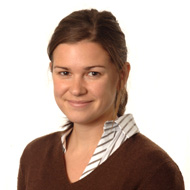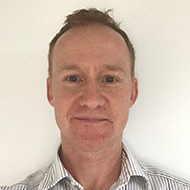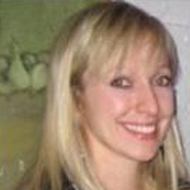Michelle works as an environmental consultant specialising in ground contamination. The majority of her career has involved the assessment of brownfield sites located in central London. Given the long industrial legacy of contaminative activities in London (such as gasworks, railways, manufactory and landfilling) and the pressures to redevelop brownfield land, it is an ideal location to gain experience of the contaminated land industry.
Her role as an environmental consultant involves researching previous land uses of a site by studying historical maps, undertaking site reconnaissance visits and ground investigations where necessary. Consequently, she have visited areas of London that she didn’t know existed and quickly discovered that travelling on the tube at rush hour loaded down with site gear is not easy!
In the office she is responsible for analysing chemical data, interpretative reporting, creating graphical representations of data using GIS and liaising with relevant stakeholders (including regulatory bodies, clients, contractors and other technical specialists). Consideration of ground contamination issues is often required for the EIA process, which involves a multidisciplinary approach to assessments. Communication with different stakeholders using various techniques to convey scientific information is another challenging yet enjoyable aspect of her job.
In addition to a variety of projects in London, she has worked on projects where the development site is located outside of the UK. This work was particularly interesting as it involves researching and understanding the geology, hydrogeology, previous land uses and country specific legislation which often differs greatly from that in the UK. This experience of travelling to new places has persuaded her to gain experience working as an environmental consultant outside of the UK. She is currently relocating from London to Perth in Western Australia. “I am sure that I will face lots of new professional challenges but hope that these will broaden my technical knowledge and transferable skills. Adapting to site work in intense heat and the risk of encountering creepy crawlies while excavating trial pits may prove more difficult.”
In June 2012 Michelle became the IES’ first post-grand-parenting Chartered Scientist. She applied for the designation to demonstrate to both clients and employers that her qualifications and work experiences meet the highest professional standards set by a recognised global standard.
“Being accepted as a Chartered Scientist requires that these standards are upheld in the work place and maintained through a commitment to continuing professional development. This provides a motivation to keep up to date with developments in my field and more generally to broaden my knowledge base by taking an interest in scientific news outside my normal discipline of work.”
It took her around four weeks in total to complete during evenings after work and weekends. She found the process a positive opportunity to take stock of her achievements to date which helped to focus her aspirations for what she would like to achieve professionally in the future.
“Throughout my career I have actively volunteered and participated in schemes to raise the profile of scientific subjects amongst school pupils, a cause that I actively support. One of my long term goals is to contribute further to this cause when opportunities arise, and to continue to dispel the common misconception amongst pupils that a scientist is a man with a beard dressed in a white coat!”




